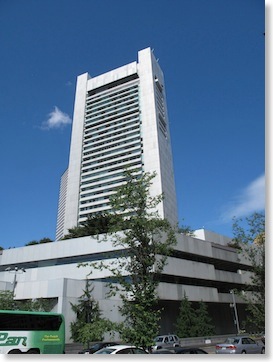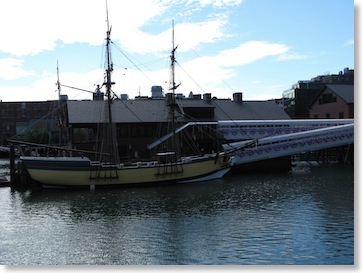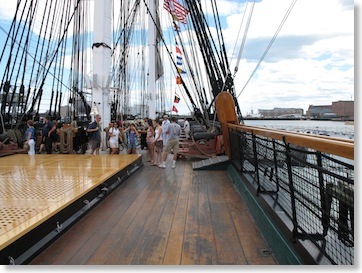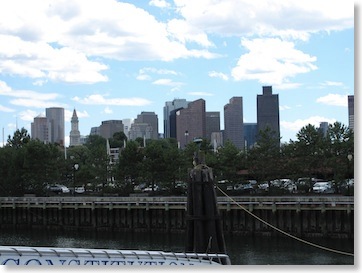Bob's Books, Part Three
08/01/14 16:10 Filed in: Interests
Here is the last of the list which is a trilogy not to be missed. Heavy, but lively reading from a master storyteller.
12, 13 & 14. World War II Trilogy/Rick Atkinson: Atkinson's monumental trilogy of the US Army during WWII from North Africa (An Army At Dawn) through Italy and Sicily (The Day of Battle) and ending with the battles in France and Germany (The Guns At Last Light) is a paean to the bravery and sacrifice of the common soldier. Atkinson combines interviews with everyday GI Joes, surviving staff officers, meticulous research of official and unofficial Army sources and the personal correspondence of a multitude of Generals, Officers and soldiers into an epic story of liberation. I read the first two volumes in 2010 and finished the third volume in 2012 shortly after its release. While I was ready for WWII to end, I also hoped Atkinson would one day write the definitive histories of the Korean and Vietnam Wars.
12, 13 & 14. World War II Trilogy/Rick Atkinson: Atkinson's monumental trilogy of the US Army during WWII from North Africa (An Army At Dawn) through Italy and Sicily (The Day of Battle) and ending with the battles in France and Germany (The Guns At Last Light) is a paean to the bravery and sacrifice of the common soldier. Atkinson combines interviews with everyday GI Joes, surviving staff officers, meticulous research of official and unofficial Army sources and the personal correspondence of a multitude of Generals, Officers and soldiers into an epic story of liberation. I read the first two volumes in 2010 and finished the third volume in 2012 shortly after its release. While I was ready for WWII to end, I also hoped Atkinson would one day write the definitive histories of the Korean and Vietnam Wars.
Bob's Books, Part Deux
07/01/14 16:04 Filed in: Interests
Here is the middle section of Bob’s list which is weighted toward the military.
6 & 7. At Dawn We Slept and Midway/Gordon Prange: Prange's classic about the disaster at Pearl Harbor is both numbingly detailed as well as overtly compelling. The followup book, Midway, is just as forceful. The slaughter of the Yorktown based marine dive bombers as they attacked the Japanese fleet is particularly heart-rending.
10. Goodbye,Darkness/ William Manchester: Manchester's book about life and death on Guadalcanal is a gripping, dark and unforgettable chronicle of the chaos in war.
11. Roll Me Over/Raymond Gantner: Roll Me Over is a "soldier's story" of the Hurtgen Forest killing field. Depressing and hopeless yet I was unable to put the book down.
The final section of this part will be for tomorrow.
6 & 7. At Dawn We Slept and Midway/Gordon Prange: Prange's classic about the disaster at Pearl Harbor is both numbingly detailed as well as overtly compelling. The followup book, Midway, is just as forceful. The slaughter of the Yorktown based marine dive bombers as they attacked the Japanese fleet is particularly heart-rending.
10. Goodbye,Darkness/ William Manchester: Manchester's book about life and death on Guadalcanal is a gripping, dark and unforgettable chronicle of the chaos in war.
11. Roll Me Over/Raymond Gantner: Roll Me Over is a "soldier's story" of the Hurtgen Forest killing field. Depressing and hopeless yet I was unable to put the book down.
The final section of this part will be for tomorrow.
Bob's Books
06/01/14 11:38 Filed in: Interests
Here is my first 5 books for my "favorites" list. Creating this kind of list is a little bit like hauling water for elephants, which is a great book.
1. A Wrinkle in Time/Madeleine L'Engle: Why?A science fiction phase I went through during middle school led me to these two. The first one, A Wrinkle In Time, was a Peabody Award winner. Why did this book remain in my consciousness as a favorite for nearly half a century? I think it is the plucky heroine, her love for and selfless courage in protecting her brother and the evil they overcame to unwrinkle time and return home. It is a timeless story about time travel and while the details are foggy, I remember reading the book several times during adolescence.
2. Farnham's Freehold/Robert Heinlein: Farnham's Freehold is not one of Heinlein's classics. The story is at times hackneyed and stereotypical, and at times predictable but I read it again last year (2012) and my appreciation for the story from the first time I read the book returned. Again, I think it is due to the resilence and courage of the everyman hero main character not to mention the sheer evil in the vision of the future Heinlein imagined for us.
3. Red Storm Rising/Tom Clancy: Red Storm Rising is Clancy's second book. I believe I read this book in three or four settings of about 4 hours each starting at 9 or 9:30 (bedtime as I was rising at 4:30 am) and ending early the following morning. I simply could not bear to part from the action Clancy succeeded in putting on the page. The imaginary invasion of Iceland by a Soviet Expeditionary Force and the vivid and detailed descriptions of land battles in Northern Germany were particularly entertaining. Like all Clancy books, the good guys win after a severe beating. This is Clancy's only book without his iconic Jack Ryan character.
4. The Bronze Horseman/Paullina Simon: I often read books recommended by my wife, and we often agree in general about the quality of a story or book, The Bronze Horseman was different. We were both simply captivated by this book. Set in WWII during the unimaginable hardship of beseiged Leningrad, our heroine and hero endure unendurable starvation, cold and deprivation; yet they love and manage to live, at least until near the end of the epic. It is a passionate story with a sad yet uplifting ending. The fact they were able to love during such hardship makes the story unforgettable.
5. Undaunted Courage/Stephen Ambrose: You can never read too many Stephen Ambrose books nor read too much about the Lewis and Clark Expedition. Ambrose's description of the hardships and difficulties faced by the expedition, the near catastrophes and the final personal failure and death of Meriwether Lewis are fascinating and illuminating. They (Lewis and Clark) and all the volunteers on the expedition were true American heros.
The next several on my list are World War Two histories or about experiences during WWII. I've combined them into a single category for simplicity. Hang on and see what they are on my next post tomorrow!
Boston Highlights
29/06/12 16:50 Filed in: Travel
Arrived in Boston late afternoon on Tuesday, June 25th in the midst of a typical east coast thunder and lightning show. After an exciting and adrenalin laden slide of a landing during a wind sheer, we rode the shuttle bus to the Airport dock and caught the Harbor Express boat to the Quincy boatyard. As we were reminded, the proper pronunciation of Quincy is “Quinzee” and don’t you forget it.
Wednesday, we ransomed a taxi to the Adams Visitor Center in downtown Quinzee. All tours start from the Visitor Center and begin with a five minute trolley ride to the birthplace houses. John Adams was born in the oldest house at the first site while John Quincy Adams was born in the second house. Each house is on the same small plot only a few feet apart and are surrounded today by a modern neighborhood in the middle of Quincy. After a short guided tour, the trolley and its passengers continued to the Old House or, as John Adams christened his home in tribute to the Treaty of Paris ending the Revolutionary War, Peace field. The Old house was home to four generations of Adams: John, his son and sixth President John Quincy, John Quincy’s son, Charles Francis and the fourth Adams, Brooks. Both Charles Francis and Brooks Adams were accomplished men in their own right. CF, in fact, played a critical role as ambassador to Great Britain for Abraham Lincoln and was nearly VP for Harrison but lost to CArthur... in other words, he was nearly our President after Harrison’s assassination.The home was bequeathed to the City of Quincy upon Brook’s death in 1927 and then transferred to the “people of the United States” in 1942. The National Park Service has maintained and managed the home since that time.
When compared to the magic of Mount Vernon, Monticello or Montpelier, the Adams home is relatively modest; more like Monroe’s house near Charlottesville, VA or Jackson’s Hermitage without the property. What sets Peace field apart is that, according to the guide, all the furnishings in the house, including the furniture, paintings and china on display were owned by the Adams. There are no reproductions or replicas in the house. In addition, adjacent to the Old House, is a magnificent stone library built by Charles Francis to house the papers and legacy of his father and grandfather. In the library is the desk John Adams used to write the CURRENT constitution of the Massachusetts’s commonwealth in 1789 and nearly all other original Adam’s letters and papers, including his amazing correspondence with Jefferson after their reconciliation. Also at the library was the desk John Quincy Adams used as a member of Congress after his one term as US President. He was active at this desk when he collapsed from the stroke that killed him at the age of 81 during the debates surrounding slavery and what eventually became the 1850 Compromise. What amazing stories these desks might tell!
On Thursday, while Vicki led the most successful Winn Feline Foundation Annual Symposium yet, I split for Boston. As I emerged from the subterranean Red Line (Boston Subway), I was immediately blinded by the reflection of the Boston Federal Reserve building (picture below). I know David will be thrilled by my experience as he “loves” the Fed as only a Paulite can. A short walk to waterfront landed me next to the Tea Party museum; another short walk and I was viewing Fanueil Hall. After those two short hikes, I bought a ticket for the tourist trolley and rode around Boston for two hours glimpsing several of the more famous Boston sites including the Commons, the MIT campus, Harvard yard, Fenway Park, Church of Christ Scientist (the largest church in North America) and several more.
 Federal Reserve
Federal Reserve
 Tea Party Central
Tea Party Central
I began my final sojourn (at least for this trip) across Boston by walking through North Boston and Little Italy-regretting the whole time my routine and boring lunch of clam chowder in a bread bowl as I passed many, many wonderful neighborhood Italian restaurants. Mama Mia, what a stupido! Also in this neighborhood is the North Church, famous, of course, for a certain midnight ride. Next, I wandered across the bridge to Charlestown (right past the Boston Garden, home of the Celtics) to the US Constitution (Old Ironsides). From the deck of the Constitution, I snapped a few pictures of the Boston skyline, then caught the bus back to South Station for the return ride to Quincy. As I entered the subway I glanced back at the many buildings and thought of the many iconic Boston sites yet unexplored: as best said by the terminator, I’ll be back!
 USS Constitution
USS Constitution
 Boston Skyline
Boston Skyline
I’ll be back in the next day or two with a short tale of our dash up US 95 to Bangor, our tour of Acadia National Part and the St. John Ferry to Nova Scotia. Thanks for reading!
Wednesday, we ransomed a taxi to the Adams Visitor Center in downtown Quinzee. All tours start from the Visitor Center and begin with a five minute trolley ride to the birthplace houses. John Adams was born in the oldest house at the first site while John Quincy Adams was born in the second house. Each house is on the same small plot only a few feet apart and are surrounded today by a modern neighborhood in the middle of Quincy. After a short guided tour, the trolley and its passengers continued to the Old House or, as John Adams christened his home in tribute to the Treaty of Paris ending the Revolutionary War, Peace field. The Old house was home to four generations of Adams: John, his son and sixth President John Quincy, John Quincy’s son, Charles Francis and the fourth Adams, Brooks. Both Charles Francis and Brooks Adams were accomplished men in their own right. CF, in fact, played a critical role as ambassador to Great Britain for Abraham Lincoln and was nearly VP for Harrison but lost to CArthur... in other words, he was nearly our President after Harrison’s assassination.The home was bequeathed to the City of Quincy upon Brook’s death in 1927 and then transferred to the “people of the United States” in 1942. The National Park Service has maintained and managed the home since that time.
When compared to the magic of Mount Vernon, Monticello or Montpelier, the Adams home is relatively modest; more like Monroe’s house near Charlottesville, VA or Jackson’s Hermitage without the property. What sets Peace field apart is that, according to the guide, all the furnishings in the house, including the furniture, paintings and china on display were owned by the Adams. There are no reproductions or replicas in the house. In addition, adjacent to the Old House, is a magnificent stone library built by Charles Francis to house the papers and legacy of his father and grandfather. In the library is the desk John Adams used to write the CURRENT constitution of the Massachusetts’s commonwealth in 1789 and nearly all other original Adam’s letters and papers, including his amazing correspondence with Jefferson after their reconciliation. Also at the library was the desk John Quincy Adams used as a member of Congress after his one term as US President. He was active at this desk when he collapsed from the stroke that killed him at the age of 81 during the debates surrounding slavery and what eventually became the 1850 Compromise. What amazing stories these desks might tell!
On Thursday, while Vicki led the most successful Winn Feline Foundation Annual Symposium yet, I split for Boston. As I emerged from the subterranean Red Line (Boston Subway), I was immediately blinded by the reflection of the Boston Federal Reserve building (picture below). I know David will be thrilled by my experience as he “loves” the Fed as only a Paulite can. A short walk to waterfront landed me next to the Tea Party museum; another short walk and I was viewing Fanueil Hall. After those two short hikes, I bought a ticket for the tourist trolley and rode around Boston for two hours glimpsing several of the more famous Boston sites including the Commons, the MIT campus, Harvard yard, Fenway Park, Church of Christ Scientist (the largest church in North America) and several more.
 Federal Reserve
Federal Reserve Tea Party Central
Tea Party CentralI began my final sojourn (at least for this trip) across Boston by walking through North Boston and Little Italy-regretting the whole time my routine and boring lunch of clam chowder in a bread bowl as I passed many, many wonderful neighborhood Italian restaurants. Mama Mia, what a stupido! Also in this neighborhood is the North Church, famous, of course, for a certain midnight ride. Next, I wandered across the bridge to Charlestown (right past the Boston Garden, home of the Celtics) to the US Constitution (Old Ironsides). From the deck of the Constitution, I snapped a few pictures of the Boston skyline, then caught the bus back to South Station for the return ride to Quincy. As I entered the subway I glanced back at the many buildings and thought of the many iconic Boston sites yet unexplored: as best said by the terminator, I’ll be back!
 USS Constitution
USS Constitution Boston Skyline
Boston SkylineI’ll be back in the next day or two with a short tale of our dash up US 95 to Bangor, our tour of Acadia National Part and the St. John Ferry to Nova Scotia. Thanks for reading!

